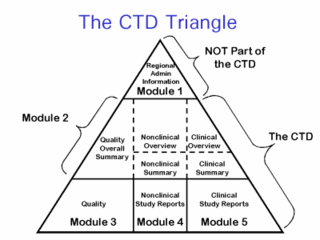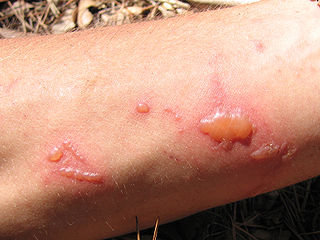
Current good manufacturing practices (cGMP) are those conforming to the guidelines recommended by relevant agencies. Those agencies control the authorization and licensing of the manufacture and sale of food and beverages, cosmetics, pharmaceutical products, dietary supplements, and medical devices. These guidelines provide minimum requirements that a manufacturer must meet to assure that their products are consistently high in quality, from batch to batch, for their intended use. The rules that govern each industry may differ significantly; however, the main purpose of GMP is always to prevent harm from occurring to the end user. Additional tenets include ensuring the end product is free from contamination, that it is consistent in its manufacture, that its manufacture has been well documented, that personnel are well trained, and that the product has been checked for quality more than just at the end phase. GMP is typically ensured through the effective use of a quality management system (QMS).

Rimonabant (also known as SR141716; trade names Acomplia, Zimulti) is an anorectic antiobesity drug approved in Europe in 2006 but was withdrawn worldwide in 2008 due to serious psychiatric side effects; it was never approved in the United States. Rimonabant is an inverse agonist for the cannabinoid receptor CB1 and was first-in-class for clinical development.

The Common Technical Document (CTD) is a set of specifications for an application dossier for the registration of medicine, designed for use across Europe, Japan, the United States, and beyond.
The International Council for Harmonisation of Technical Requirements for Pharmaceuticals for Human Use (ICH) is an initiative that brings together regulatory authorities and pharmaceutical industry to discuss scientific and technical aspects of pharmaceutical product development and registration. The mission of the ICH is to promote public health by achieving greater harmonisation through the development of technical Guidelines and requirements for pharmaceutical product registration.

Phototoxicity, also called photoirritation, is a chemically induced skin irritation, requiring light, that does not involve the immune system. It is a type of photosensitivity.
The Clinical Data Interchange Standards Consortium (CDISC) is a standards developing organization (SDO) dealing with medical research data linked with healthcare, to "enable information system interoperability to improve medical research and related areas of healthcare". The standards support medical research from protocol through analysis and reporting of results and have been shown to decrease resources needed by 60% overall and 70–90% in the start-up stages when they are implemented at the beginning of the research process.
EudraVigilance is the European data processing network and management system for reporting and evaluation of suspected adverse reactions to medicines which have been authorised or being studied in clinical trials in the European Economic Area (EEA). The European Medicines Agency (EMA) operates the system on behalf of the European Union (EU) medicines regulatory network.
Structured Product Labeling (SPL) is a Health Level Seven International (HL7) standard which defines the content of human prescription drug labeling in an XML format. The "drug labeling" includes all published material accompanying a drug, such as the Prescribing Information which contains a great deal of detailed information about the drug. As of Release 4 of the SPL standard, 22,000 FDA informational product inserts have been encoded according to the standard.
Safety pharmacology is a branch of pharmacology specialising in detecting and investigating potential undesirable pharmacodynamic effects of new chemical entities (NCEs) on physiological functions in relation to exposure in the therapeutic range and above.
Submission Management is the art and science of collecting and managing any kind of submissions. Traditionally, submissions were collected offline i.e. in the form of 'hard' paper files or folders. However, with the recent penetration of Internet in almost every sphere of life, there has been a steady shift towards collecting electronic submissions as compared to hard copies of submissions. The Internet has also facilitated a change in the perception towards the deliverables or contents of a submission. As a result of this, submitting audio and video files, pictures and presentations in addition to standard text, word and pdf-like documents has become common in the last few years.

Iclaprim is an antibiotic drug candidate that is active against Gram positive organisms. It is administered intravenously.

Teriflunomide, sold under the brand name Aubagio, is the active metabolite of leflunomide. Teriflunomide was investigated in the Phase III clinical trial TEMSO as a medication for multiple sclerosis (MS). The study was completed in July 2010. 2-year results were positive. However, the subsequent TENERE head-to-head comparison trial reported that "although permanent discontinuations [of therapy] were substantially less common among MS patients who received teriflunomide compared with interferon beta-1a, relapses were more common with teriflunomide." The drug was approved for use in the United States in September 2012 and for use in the European Union in August 2013.
The following outline is provided as an overview of and topical guide to clinical research:
Regulated Product Submission (RPS) is a Health Level Seven (HL7) standard designed to facilitate the processing and review of regulated product information. RPS is being developed in response to performance goals that the U.S. Food and Drug Administration (FDA) is to achieve by 2012, as outlined in the Prescription Drug User Fee Act (PDUFA). In addition to the U.S., regulatory agencies from Europe, Canada, and Japan are at varying levels of interest and participation. Currently, the second release of RPS is in development.
The certificate of pharmaceutical product is a certificate issued in the format recommended by the World Health Organization (WHO), which establishes the status of the pharmaceutical product and of the applicant for this certificate in the exporting country; it is often mentioned in conjunction with the electronic Common Technical Document (eCTD). A CPP is issued for a single product, because manufacturing arrangements and approved information for different pharmaceutical forms and strengths can vary. The CPP is mentioned in World Trade Organization documents, although the tightly regulated products are subject to bilateral trade agreements or regional trade agreements. The International Council for Harmonisation of Technical Requirements for Pharmaceuticals for Human Use (ICH) has instituted standards for this purpose but it is unclear how the ex-ICH countries operate their health regulators.
In order to comply with government regulatory requirements pertinent to clinical trials, every organization involved in clinical trials must maintain and store certain documents, images and content related to the clinical trial. Depending on the regulatory jurisdiction, this information may be stored in the trial master file or TMF, which today takes the form of an electronic trial master file (eTMF). The International Conference on Harmonization (ICH) published a consolidated guidance for industry on Good Clinical Practice in 1996 with the objective of providing a unified standard for the European Union, Japan, and the United States of America to facilitate mutual acceptance of clinical data by the regulatory authorities in those jurisdictions. This guidance document established the requirement across all ICH regions to establish trial master files containing essential documents that individually and collectively permit evaluation of the conduct of a trial and the quality of the data produced.[2] In some jurisdictions, for example the USA, there is no specific requirement for a trial master file. However, if the regulatory authority requires ICH GCP to be followed, then there is consequently a requirement to create and maintain a trial master file.[2]

The Pharmaceuticals and Medical Devices Agency (PhMDA) is an Independent Administrative Institution responsible for ensuring the safety, efficacy and quality of pharmaceuticals and medical devices in Japan. It is similar in function to the Food and Drug Administration in the United States, the Medicines and Healthcare products Regulatory Agency in the United Kingdom, the Spanish Agency of Medicines and Medical Devices in Spain or the Food and Drug Administration in the Philippines.
An electronic trial master file (eTMF) is a trial master file in electronic format. It is a type of content management system for the pharmaceutical industry, providing a formalized means of organizing and storing documents, images, and other digital content for pharmaceutical clinical trials that may be required for compliance with government regulatory agencies. The term eTMF encompasses strategies, methods and tools used throughout the lifecycle of the clinical trial regulated content. An eTMF system consists of software and hardware that facilitates the management of regulated clinical trial content. Regulatory agencies have outlined the required components of eTMF systems that use electronic means to store the content of a clinical trial, requiring that they include: Digital content archiving, security and access control, change controls, audit trails, and system validation.
Guidances for statistics in regulatory affairs refers to specific documents or guidelines that provide instructions, recommendations, and standards pertaining to the application of statistical methodologies and practices within the regulatory framework of industries such as pharmaceuticals and medical devices. These guidances serve as a reference for statisticians, researchers, and professionals involved in designing, conducting, analyzing, and reporting studies and trials in compliance with regulatory requirements. These documents embody the prevailing perspectives of regulatory agencies on specific subjects. It is worth noting that in the United States, the term "Guidances" is used, while in Europe, the term "Guidelines" is employed.







